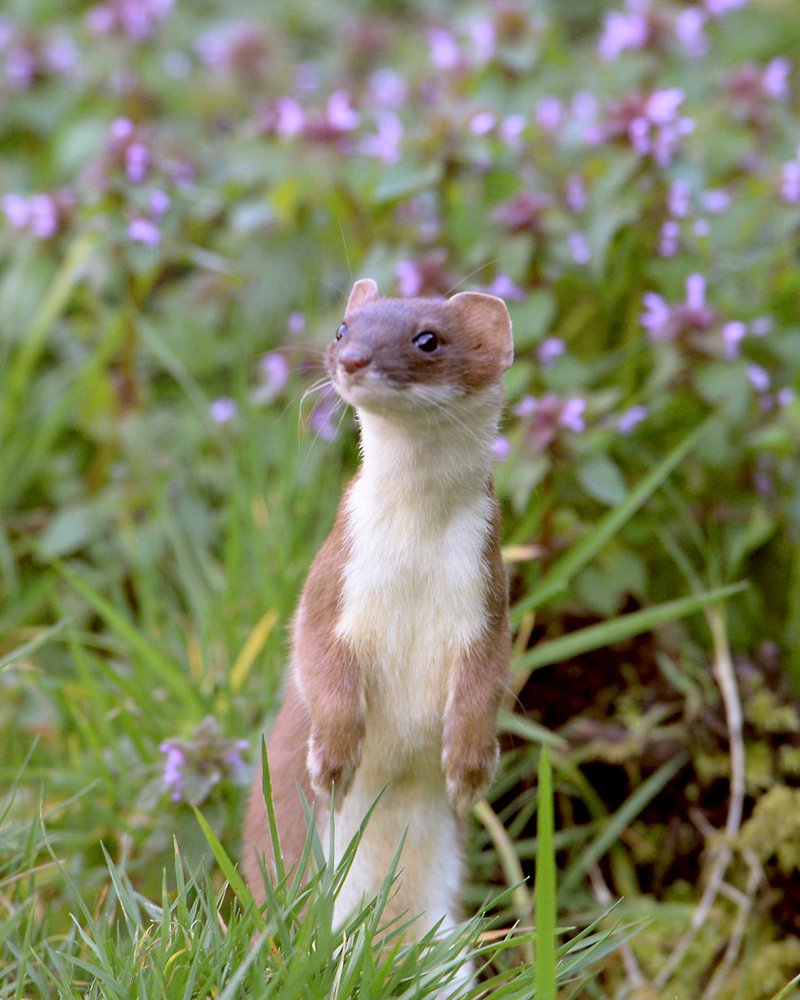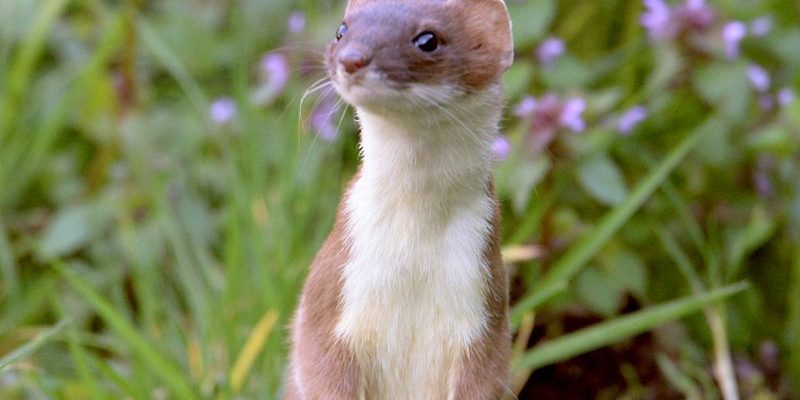
Imagine a cozy little underground lair in the woods, snug and safe. This is where stoats become parents. They’ve got an important job ahead of them: raising their tiny, helpless kits. The process may feel like a balancing act, filled with challenges and triumphs as the stoat mother navigates her new role in the circle of life. Just like any good story, there are twists and turns along the way. In this article, we’ll explore how stoats care for their young and the remarkable adaptations they’ve developed to ensure those kits grow up strong and ready to take on the world.
Choosing a Safe Den
The first step in a stoat’s parenting adventure is finding the perfect place to raise their little ones. A den provides shelter from predators and harsh weather, making it a crucial part of their survival strategy. Stoats often dig their own dens or take over abandoned burrows from other animals, like rabbits or rodents. The choice of location is essential; it needs to be secretive yet accessible.
You might wonder what makes a den perfect for raising kits. Here are some key factors:
- Location: Stoats usually favor areas with dense vegetation. This not only provides cover from predators but also close proximity to food sources.
- Safety: The den must be well-hidden to protect the young from potential threats like foxes or birds of prey.
- Size: A cozy yet spacious den allows the mother stoat to comfortably care for her growing family.
It’s interesting to think about how a mother stoat instinctively knows what her kits need from the moment they arrive. After all, this tiny creature is responsible for the survival of her offspring, and every choice matters.
Giving Birth and Caring for the Kits
Once a safe den is established, the next part of the journey begins: giving birth. Stoats typically have a litter of about three to eight kits in late spring. Now, these little bundles of fur are born blind and helpless, relying entirely on their mother for care. Here’s where the real work begins for stoat moms.
After giving birth, the mother stoat stays close to her kits, ensuring they’re warm, fed, and safe. She will nurse them for several weeks, providing essential nutrients to help them grow. The kits will start to gain strength and agility during this time, learning through play and exploration.
As the weeks pass and the kits grow stronger, they begin to venture out of the den with their mother. This is a crucial stage of development. The mother stoat teaches her young how to hunt and avoid danger. It’s an incredible sight to see these tiny creatures mimic their mom as they practice stalking and chasing. You might find it heartwarming to think about the little kits learning the ways of the wild under their mother’s watchful gaze.
Feeding and Hunting Skills
As those kits grow, their diets shift from mother’s milk to solid food. This change is significant, as stoats are natural hunters. Their diet mainly consists of small mammals, birds, and even insects. This is where the mother stoat’s teaching comes into play. You might say she’s not just a caregiver; she’s a teacher too!
Here’s how stoat kits learn to hunt:
- Observation: The mother stoat becomes the ultimate role model, demonstrating how to stalk and pounce on prey.
- Practice: Once they’re confident enough, the kits start practicing on small creatures. They’ll often play, turning their hunting attempts into games.
- Teamwork: Stoats are social creatures, and sometimes you may even see siblings hunting together, enhancing their skills through teamwork.
Watching this learning process unfold can be fascinating. It reminds us that nature isn’t just about survival of the fittest; it’s also about the bond between parent and child, the passing down of essential skills for a successful life in the wild.
The Role of the Father Stoat
You might be surprised to learn that the role of male stoats in raising young isn’t as hands-on as one might expect. While the father stoat typically doesn’t play an active role in caring for the kits, he does contribute to their well-being. Here’s how:
1. Territory Defense: The male stoat helps protect the territory from intruders, ensuring a safe environment for the mother and her kits. This protection is crucial, especially during their vulnerable early weeks.
2. Food Supply: Sometimes, the male will also help by hunting for food, bringing it back to the den. While this isn’t always the case, having a supportive male can make a real difference.
3. Genetic Contribution: Last but not least, the father stoat offers genetic diversity through breeding. This genetic variation is important for the overall health and adaptability of the offspring.
It’s sort of like having a supportive partner in any aspect of life—sometimes they help out directly, and other times they create a safe space for growth.
Challenges Faced in the Wild
Raising young in the wild is no easy task, and stoats face numerous challenges. From predators to food scarcity, their parenting journey is filled with hurdles. Here are some of the biggest challenges they encounter:
– Predation: Young kits are vulnerable to numerous predators, such as hawks and foxes. The mother must remain vigilant, often shifting her den to avoid unwanted attention.
– Food Availability: During certain seasons, food may be scarce. If the mother stoat can’t find enough to eat, she may struggle to provide for her kits. This situation can lead to difficult choices in the wild.
– Environmental Changes: Factors like harsh weather, habitat destruction, or human interference can significantly impact their ability to raise young successfully.
It’s a tough reality for stoats, but their tenacity and adaptability are what make them such fascinating creatures to study. Just imagining the daily struggles of a stoat mother trying to keep her kits safe gives us a glimpse into the challenges of wildlife parenting.
Independence and Leaving the Nest
As the kits grow and develop their skills, the time inevitably comes for them to gain independence. By late summer, they are generally ready to leave the den and venture out on their own. This transition is crucial for their survival in the wild.
When the kits first explore beyond the safety of their den, their mom is still close by, ready to guide them. She’ll often encourage them to venture further, catching small prey for them to practice with. This gentle nudge helps them build confidence as they learn what it means to survive without her constant presence.
Eventually, as the kits become more self-sufficient, they’ll begin to establish their own territories. It’s bittersweet, knowing that the mother stoat has done her job well, but also realizing that this is part of the natural cycle of life. These young stoats, armed with the skills they learned from their mother, will continue the legacy of adaptation and survival.
Raising young in the wild is a complex, rewarding journey for stoats. From choosing a safe den to teaching hunting skills, stoat mothers exhibit a remarkable blend of instinct and adaptability. The challenges they face only deepen the connection between parent and offspring, showcasing the beauty of life in the wild.
So, the next time you think about how animals parent, remember the stoat—a creature that embodies resilience and dedication. Each small step they take in raising their young contributes to the ongoing story of their species. In a way, it reminds us that, whether in the wild or in our lives, nurturing and growth are universal themes that bind us all together.

